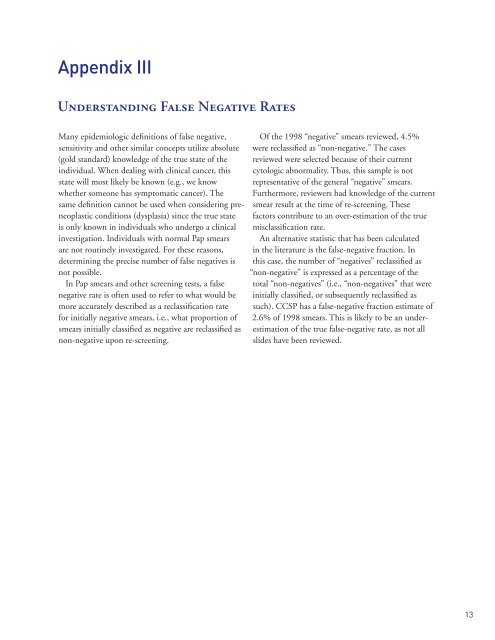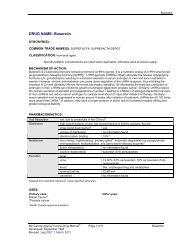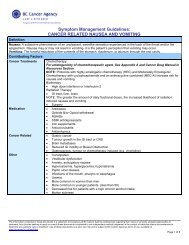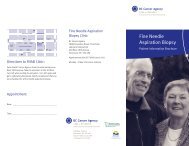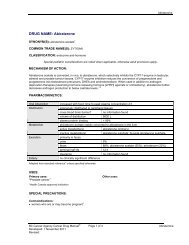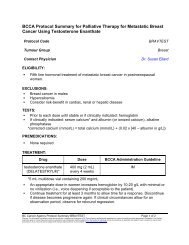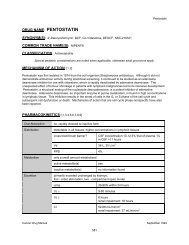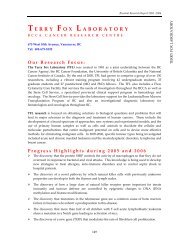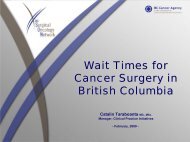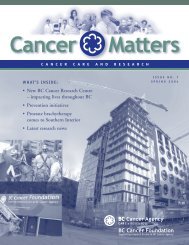CCSP manual - BC Cancer Agency
CCSP manual - BC Cancer Agency
CCSP manual - BC Cancer Agency
Create successful ePaper yourself
Turn your PDF publications into a flip-book with our unique Google optimized e-Paper software.
Appendix III<br />
Understanding False Negative Rates<br />
Many epidemiologic definitions of false negative,<br />
sensitivity and other similar concepts utilize absolute<br />
(gold standard) knowledge of the true state of the<br />
individual. When dealing with clinical cancer, this<br />
state will most likely be known (e.g., we know<br />
whether someone has symptomatic cancer). The<br />
same definition cannot be used when considering preneoplastic<br />
conditions (dysplasia) since the true state<br />
is only known in individuals who undergo a clinical<br />
investigation. Individuals with normal Pap smears<br />
are not routinely investigated. For these reasons,<br />
determining the precise number of false negatives is<br />
not possible.<br />
In Pap smears and other screening tests, a false<br />
negative rate is often used to refer to what would be<br />
more accurately described as a reclassification rate<br />
for initially negative smears, i.e., what proportion of<br />
smears initially classified as negative are reclassified as<br />
non-negative upon re-screening.<br />
Of the 1998 “negative” smears reviewed, 4.5%<br />
were reclassified as “non-negative.” The cases<br />
reviewed were selected because of their current<br />
cytologic abnormality. Thus, this sample is not<br />
representative of the general “negative” smears.<br />
Furthermore, reviewers had knowledge of the current<br />
smear result at the time of re-screening. These<br />
factors contribute to an over-estimation of the true<br />
misclassification rate.<br />
An alternative statistic that has been calculated<br />
in the literature is the false-negative fraction. In<br />
this case, the number of “negatives” reclassified as<br />
“non-negative” is expressed as a percentage of the<br />
total “non-negatives” (i.e., “non-negatives” that were<br />
initially classified, or subsequently reclassified as<br />
such). <strong>CCSP</strong> has a false-negative fraction estimate of<br />
2.6% of 1998 smears. This is likely to be an underestimation<br />
of the true false-negative rate, as not all<br />
slides have been reviewed.<br />
13


